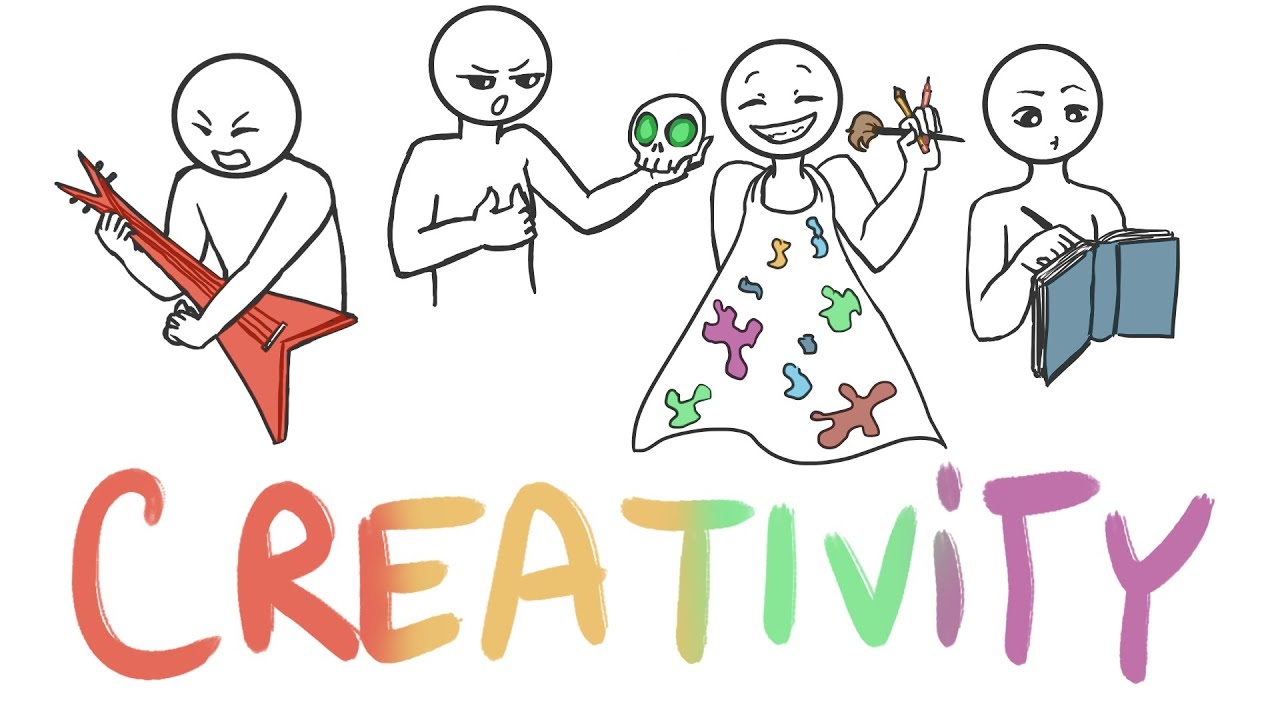The Personal Challenges of Being Creative

Creativity is often romanticized as an innate gift, a fountain of inspiration that flows freely for those lucky enough to possess it. However, the reality of living a creative life is far more complex. The process of creating—whether it be art, literature, music, or any other form of expression—demands not only inspiration but also immense emotional and psychological resilience. The personal challenges that come with being creative are multifaceted, ranging from self-doubt and perfectionism to the struggle for originality and the fear of failure.
1. The Burden of Self-Doubt
One of the most pervasive challenges faced by creative individuals is self-doubt. The act of creating something new is inherently vulnerable; it requires putting a piece of oneself into the world for others to judge. This can lead to a constant inner dialogue filled with questions like, "Is this good enough?" or "Will anyone care about this?" Self-doubt can be paralyzing, making it difficult to start, continue, or complete creative work.
For inspiring graphic design work visit: https://www.portside.wales/services/graphic-design/
For many, this doubt isn't a fleeting feeling but a persistent presence. It's often exacerbated by the creative process itself, where the initial excitement of an idea can be quickly overshadowed by the realization of how much work lies ahead, or how the final product may not match the vision in one's mind. The fear that one's work is inadequate or unworthy can lead to procrastination, avoidance, or even abandoning projects altogether.
2. Perfectionism and the Fear of Imperfection
Closely linked to self-doubt is perfectionism, a common trait among creative people. While striving for excellence can push individuals to produce high-quality work, perfectionism often becomes a double-edged sword. It can lead to an unrealistic expectation of flawlessness, where anything less than perfect is seen as a failure.
Perfectionism can stifle creativity, as the fear of making mistakes can prevent one from taking risks or exploring new ideas. The creative process is inherently messy, full of trial and error, but perfectionists may struggle to accept this. They may spend excessive time refining details at the expense of the overall project or become so fixated on a single aspect that they fail to move forward. This can result in unfinished work or, worse, creative burnout.
3. The Struggle for Originality
In a world saturated with content, the pressure to be original can be overwhelming. Creative individuals often grapple with the fear that their ideas are not unique, that they are merely recycling what has already been done. This concern can lead to a paralyzing fear of being derivative, which may stifle the creative process before it even begins.
The quest for originality is further complicated by the realization that truly original ideas are rare. Many artists and creators eventually come to terms with the idea that most creativity involves building upon or reinterpreting existing ideas. However, the pressure to stand out in a crowded field can still weigh heavily, leading to anxiety and frustration.
4. Isolation and Loneliness
Creativity often requires solitude, but this can lead to feelings of isolation and loneliness. The creative process frequently demands long hours of focused work, which can pull individuals away from social interactions and support systems. While some creators thrive in solitude, others may struggle with the lack of connection, which can exacerbate feelings of alienation.
Moreover, the nature of creative work can make it difficult for others to understand the challenges faced by creative individuals. Friends and family may not grasp the emotional highs and lows, the obsessive attention to detail, or the frustration of hitting creative blocks. This lack of understanding can further deepen feelings of isolation, making it even harder to persevere through difficult creative periods.
5. The Emotional Rollercoaster
The emotional intensity that often accompanies creativity can be both a gift and a curse. Creative individuals are frequently deeply sensitive, which allows them to perceive and express the world in unique ways. However, this sensitivity also makes them more vulnerable to emotional turbulence.
The process of creation can be an emotional rollercoaster, with intense highs when things are going well and crushing lows when they are not. The excitement of a new idea can quickly turn to frustration if the execution doesn't meet expectations. This emotional volatility can be exhausting, leading to periods of intense productivity followed by burnout.
6. The Pressure of Public Reception
Once a creative work is released into the world, it is no longer just the creator's; it belongs to the audience as well. The pressure of public reception can be daunting, as creators must grapple with the possibility of criticism, rejection, or indifference. Even positive reception can bring its own set of challenges, as it may create pressure to replicate success or conform to others' expectations.
Social media and the internet have amplified this pressure, as creators are now more directly exposed to public opinion than ever before. A single negative comment or review can overshadow countless positive ones, leading to self-doubt and discouragement. The constant need for validation and the fear of negative feedback can be crippling, making it difficult for creators to stay true to their vision.
7. Balancing Commercial Success and Artistic Integrity
For many creative individuals, there is a constant tension between creating work that is commercially successful and staying true to their artistic vision. This is especially challenging for those who rely on their creativity as a source of income. The need to make a living can lead to compromises that feel like betrayals of one's creative ideals.
The struggle to balance commercial success with artistic integrity can lead to a sense of internal conflict. On one hand, creators want their work to be appreciated and successful; on the other hand, they may fear that pursuing commercial appeal will dilute their vision or authenticity. This conflict can create a sense of disillusionment, where the joy of creation is overshadowed by the demands of the marketplace.
8. The Risk of Burnout
The cumulative effect of these challenges can lead to creative burnout, a state of emotional, mental, and physical exhaustion that can sap one's ability to create. Burnout is particularly common among those who work in creative fields professionally, where the pressure to produce consistently can be overwhelming.
Burnout often manifests as a loss of motivation, a sense of detachment from one's work, and an inability to generate new ideas. It can be devastating, not only because it hinders productivity but also because it can shake one's very identity as a creative person. Recovering from burnout often requires taking a step back, which can be difficult for those who feel a constant pressure to produce.
9. Navigating Creative Blocks
Every creative person encounters blocks at some point, where the flow of ideas dries up, and progress grinds to a halt. These blocks can be caused by a variety of factors, including stress, fatigue, external pressures, or even the challenges mentioned earlier, like self-doubt and perfectionism.
Creative blocks can be frustrating and demoralizing, especially when they persist for long periods. They can create a sense of desperation, as creators may feel that they have lost their ability to create altogether. Overcoming these blocks often requires patience, self-compassion, and sometimes a willingness to explore new methods or approaches.
10. The Challenge of Self-Discipline
Creativity often requires a significant amount of self-discipline. Unlike other professions with clear structures and schedules, creative work is often self-directed, requiring individuals to set their own goals and maintain their own motivation. This can be particularly challenging because the creative process is rarely linear and can involve long periods of trial and error.
Self-discipline is essential to push through difficult phases of the creative process, to keep working even when inspiration wanes, and to see projects through to completion. However, maintaining this discipline can be draining, especially when combined with the other challenges that creative individuals face.
11. The Impact on Mental Health
The accumulation of these challenges can take a significant toll on mental health. Many creative individuals struggle with anxiety, depression, and other mental health issues, exacerbated by the pressures and stresses of the creative life. The emotional highs and lows, the isolation, the self-doubt, and the constant push for perfection can all contribute to mental health struggles.
It's not uncommon for creative individuals to feel overwhelmed by the demands of their work and the weight of their own expectations. Finding a balance between creative ambition and mental well-being is an ongoing challenge, and one that requires intentional self-care and support.
12. The Need for Resilience
Despite the many challenges, resilience is perhaps the most important quality for a creative individual. The ability to persevere in the face of self-doubt, to continue creating despite fear of failure, and to push through blocks and burnout is essential to a sustained creative life. Resilience allows creators to weather the inevitable ups and downs of the creative process and to continue growing and evolving in their work.
Resilience doesn't mean ignoring or suppressing the challenges but rather learning to navigate them. It involves developing a healthy relationship with failure, embracing imperfection, and finding ways to stay motivated even when the going gets tough. For many creative individuals, this resilience is cultivated over time, through experience, and through a deep connection to their passion for their work.
The life of a creative individual is filled with unique challenges, many of which are deeply personal and can be difficult to articulate. From the burden of self-doubt to the struggle for originality, the pressure of public reception, and the risk of burnout, the path of creativity is often fraught with emotional and psychological hurdles.
However, these challenges are not insurmountable. With resilience, self-compassion, and a willingness to embrace the messiness of the creative process, individuals can navigate these difficulties and continue to produce meaningful, impactful work. Creativity is a journey, not a destination, and the challenges along the way are as much a part of that journey as the moments of inspiration and success.




